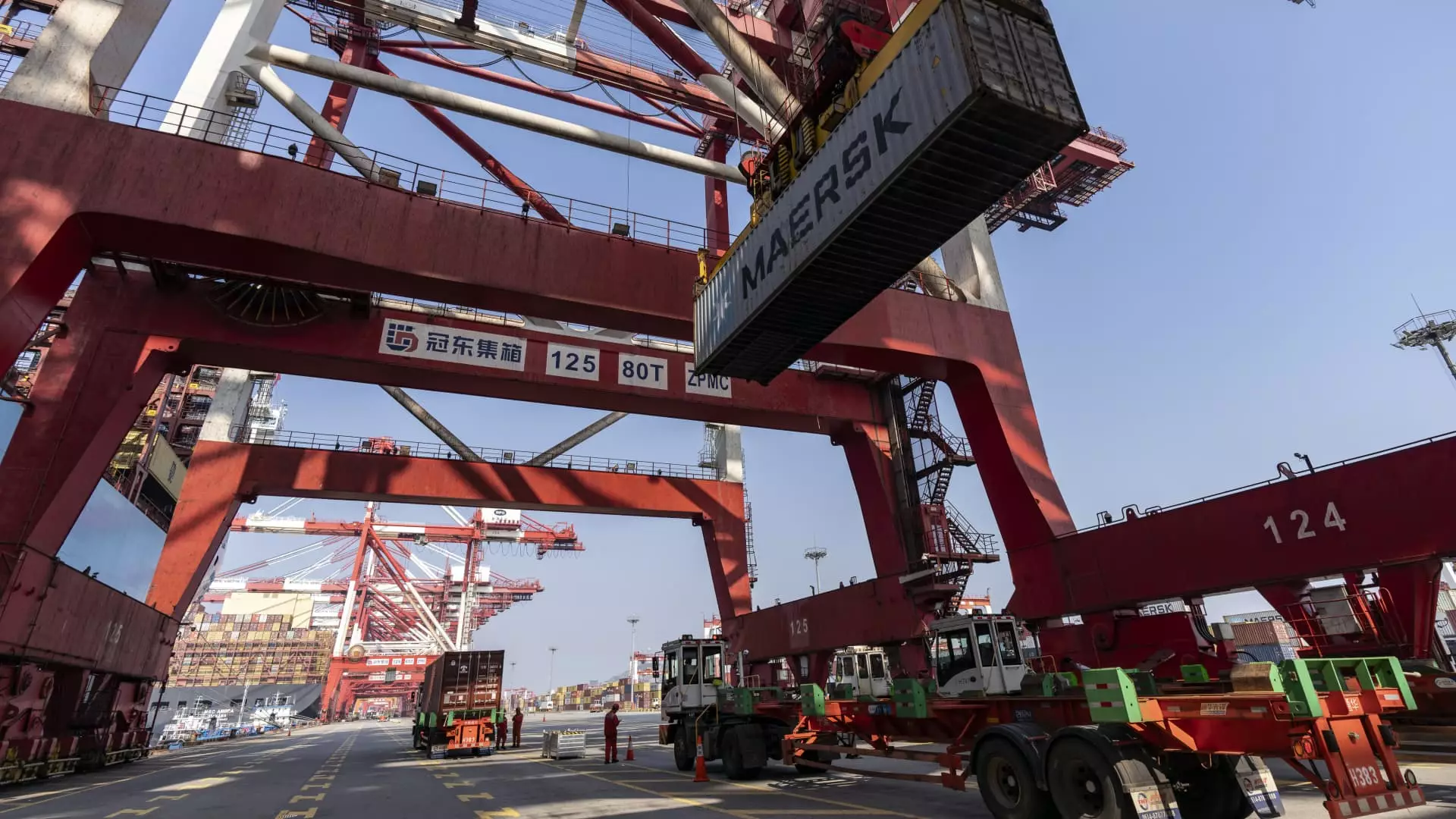In September, the performance of China’s trade sector raised alarms, as both exports and imports fell short of expectations. The official customs data indicated that year-on-year exports grew by a modest 2.4% when evaluated in U.S. dollar terms, while imports saw a slight rise of 0.3%. These figures emerged against a backdrop of anticipation, where analysts had been projecting exports would surge by 6% and imports increase by 0.9%. The inability to meet these forecasts suggests a troubling trend for one of China’s key economic engines.
Exports have historically played a pivotal role in bolstering China’s economy, which has faced multiple headwinds, including disappointing consumer spending and a stagnating real estate market. As we evaluate the implications of these recent developments, experts are increasingly concerned that persistent trade tensions with major partners will further impede the pace of export growth as the year progresses. Zhiwei Zhang, president and chief economist at Pinpoint Asset Management, highlighted the need for a decisive shift in fiscal policy to underpin economic growth moving forward.
The intricate dance of trade between China and its primary trading partners reveals both opportunities and challenges. Exports to the U.S.—China’s most significant trading partner—saw a minor increase of 2.2%, accompanied by a more pronounced rise in imports from the U.S. at 6.7%. It suggests that while there is some resilience in trade with the U.S., the overall trade ecosystem is vulnerable to tariff increases and geopolitical tensions.
Analysts at Capital Economics, including Zichun Huang, suggest that while import volumes might have decreased, increased fiscal spending by the Chinese government is likely to revive demand for industrial commodities. Such fiscal measures are essential given the continuous pressure from tariff regimes that exist, particularly those imposed by the U.S. and European Union on a range of products, including electric cars.
Beyond the U.S., China’s trade with the Association of Southeast Asian Nations (ASEAN) demonstrated positive momentum, with exports to this collective rising by 5.5% and imports growing by 4.2%. However, trade with the European Union displayed signs of weakening, with exports edging up only 1.3% while imports dipped by 4%. The divergent performance among trade partners suggests varying levels of market demand and competitive positioning that could impact future trade dynamics.
Interestingly, China experienced a remarkable surge in exports to Russia—up 16.6%—which may reflect shifting alliances amid evolving geopolitical currents. Yet, even as some markets such as Russia show potential, a consistent decline in trade with other key regions signals underlying vulnerabilities.
Digging deeper into specific sectors, the overall growth of the automobile export segment has moderated, presenting a 25.7% year-on-year increase. In contrast, products such as shoes, toys, and smartphones saw declines in export volume, reinforcing questions surrounding domestic consumption patterns and competitive edge in global markets. Conversely, categories like home appliances, integrated circuits, and ships performed better, hinting at potential growth areas within China’s broader manufacturing capabilities.
On the import front, energy needs reflect a paradox in China’s economic landscape; crude oil imports dropped by 10.7%, suggesting weakened domestic demand, while imports of natural gas and coal increased. This shift may illustrate strategic adjustments in energy sourcing as China fortifies its emphasis on national security and self-sufficiency.
The trade data paints a disheartening picture when reviewed alongside the latest inflation figures, which denote increasing weakness in consumer demand. The core consumer price index recorded a meager 0.1% increase in September—the slowest growth since February 2021. Moreover, amidst prominent tourist events such as the Mid-Autumn Festival and Golden Week, tourism-related prices fell by 2.1%.
As the National Bureau of Statistics prepares to unveil third-quarter GDP data, including figures on retail sales, industrial production, and fixed asset investment, stakeholders are eagerly watching for signs of recovery. Increased stimulus measures announced by the Chinese government have created a degree of optimism, yet such initiatives may lack clarity and urgency in their execution.
The current trade figures signal a critical juncture for China’s economic trajectory as it grapples with internal pressures and external challenges. Moving forward, the efficacy of fiscal policy adjustments will be crucial in navigating this multifaceted landscape, with sustained growth contingent upon essential reforms coupled with prudent management of trade relationships.

Leave a Reply